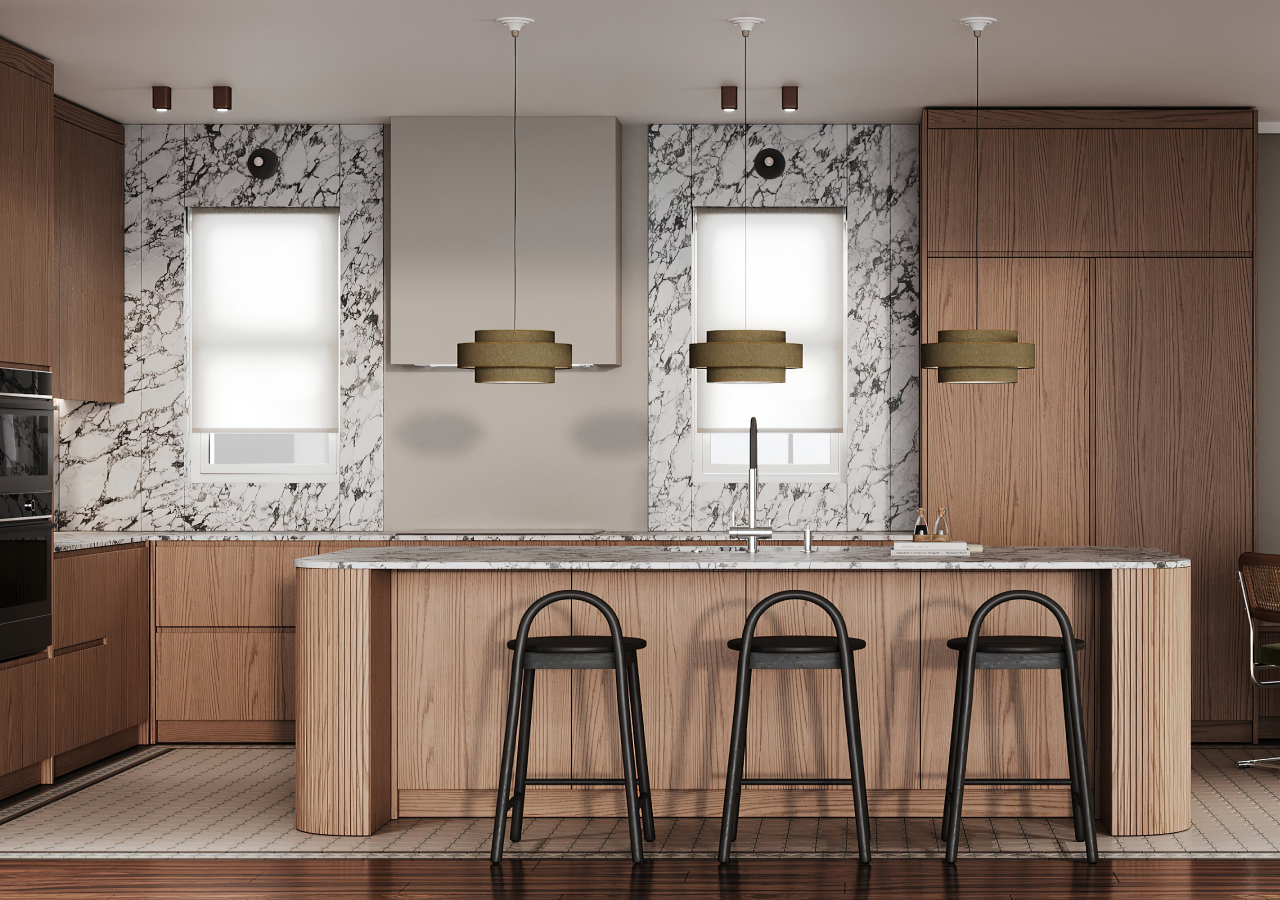Scandinavian kitchen design is a style that can improve your daily life. Designed for modern homeowners who value aesthetics and practicality, these kitchens bring clarity and functionality to the home. Scandinavian kitchens are ideal for those who prefer minimalist spaces that still feel cozy.
The Scandinavian design philosophy is based on the idea that beauty and functionality should complement each other. Modern storage solutions integrated into kitchen cabinets are user-friendly. They simplify daily life, reduce visual clutter, and create more space to enjoy the kitchen. In this article, we introduce 20 practical Scandinavian-style kitchen ideas to add variety to your kitchen design.
1. Embrace Warm Neutral Colors
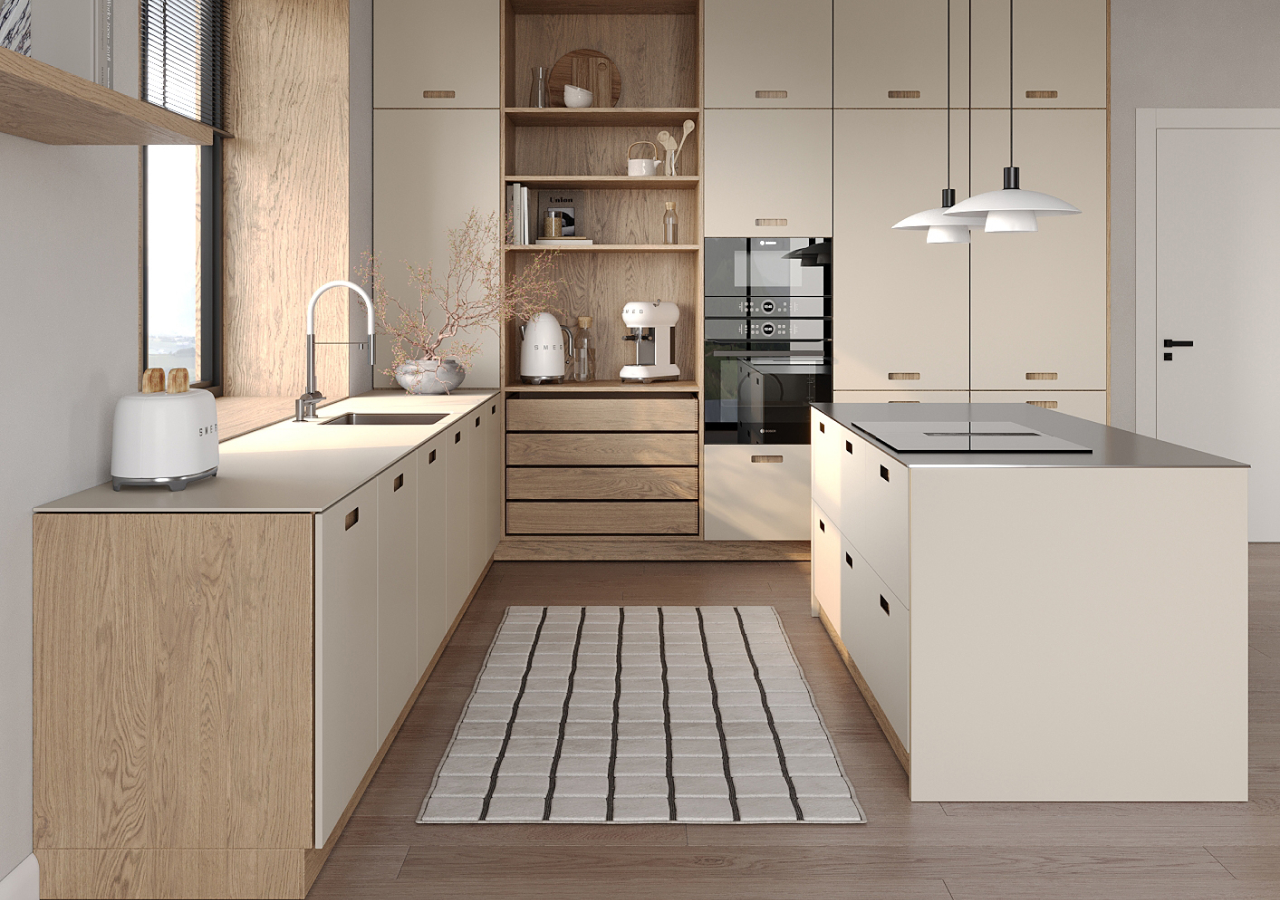
Warm, neutral tones define the style of a Scandinavian kitchen. Think beige, light taupe, creamy white, and soft gray shades. These colors create a calm backdrop that highlights natural materials, accents, and textures. They soften the overall impression and add warmth without overwhelming the space. Use these colors on walls, cabinets, and countertops to achieve a cozy, harmonious look that never goes out of style.
2. Add Sage Green to Your Palette

To create a color accent that does not disrupt the tranquility of Scandinavian design, sage green is a popular choice. It blends beautifully with light wood and various accents, both white and dark, giving the space a cozy feel while maintaining its airiness. Whether it's cabinet fronts or countertops, sage green adds a natural, earthy tone that enhances the connection with nature.
3. Opt for Streamlined Cabinets
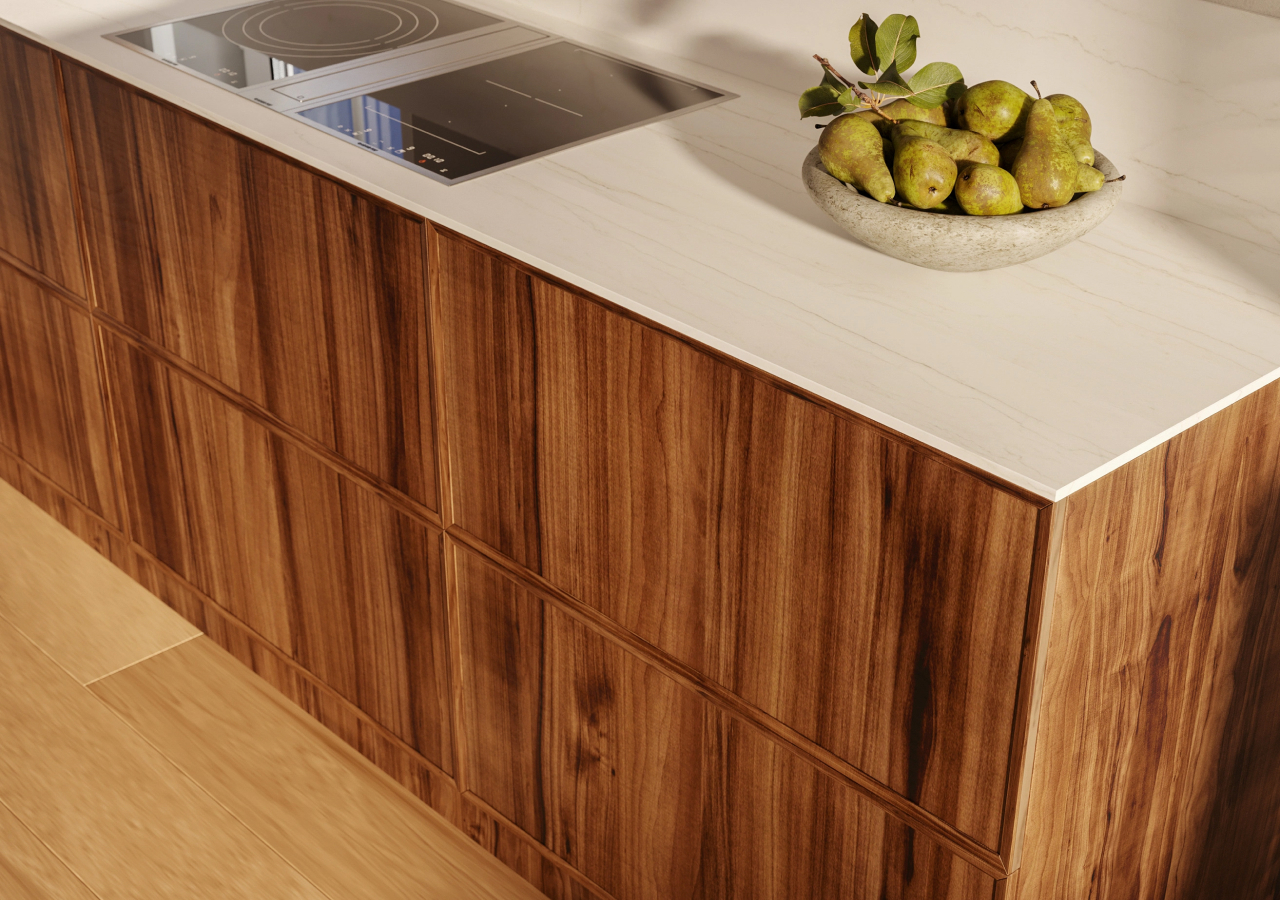
A frameless cabinet design helps maintain the clean lines for which Scandinavian kitchens are known. Handleless cabinet designs, such as push-to-open systems or recessed handles, contribute to a modern, cohesive aesthetic. In addition to their appearance, handleless cabinets are practical because they are easy to clean and save space. This design choice maintains a clean line of sight and helps create a spacious, "breathable" space.
4. Highlight Natural Wood
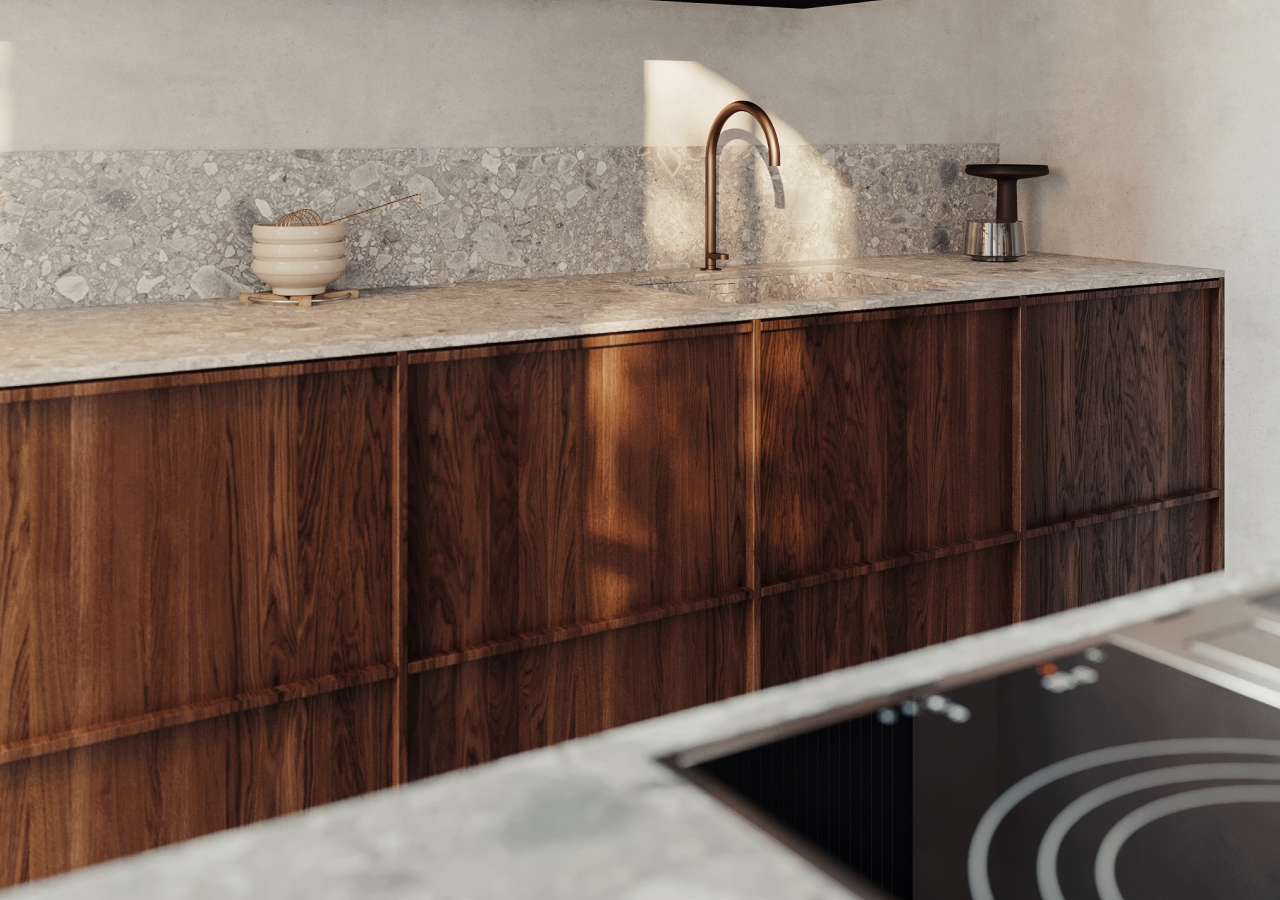
Natural wood is the soul of Scandinavian kitchen design. Whether it's oak, ash, or American walnut veneer, wood adds visual warmth and organic texture to a space. Use it in base cabinets, open shelves, or accent details such as toe kicks and niches. Scandinavian kitchens often combine light wood with a matte finish and stone countertops to create a refined, balanced look.
5. Choose Minimalist Handle Cabinets
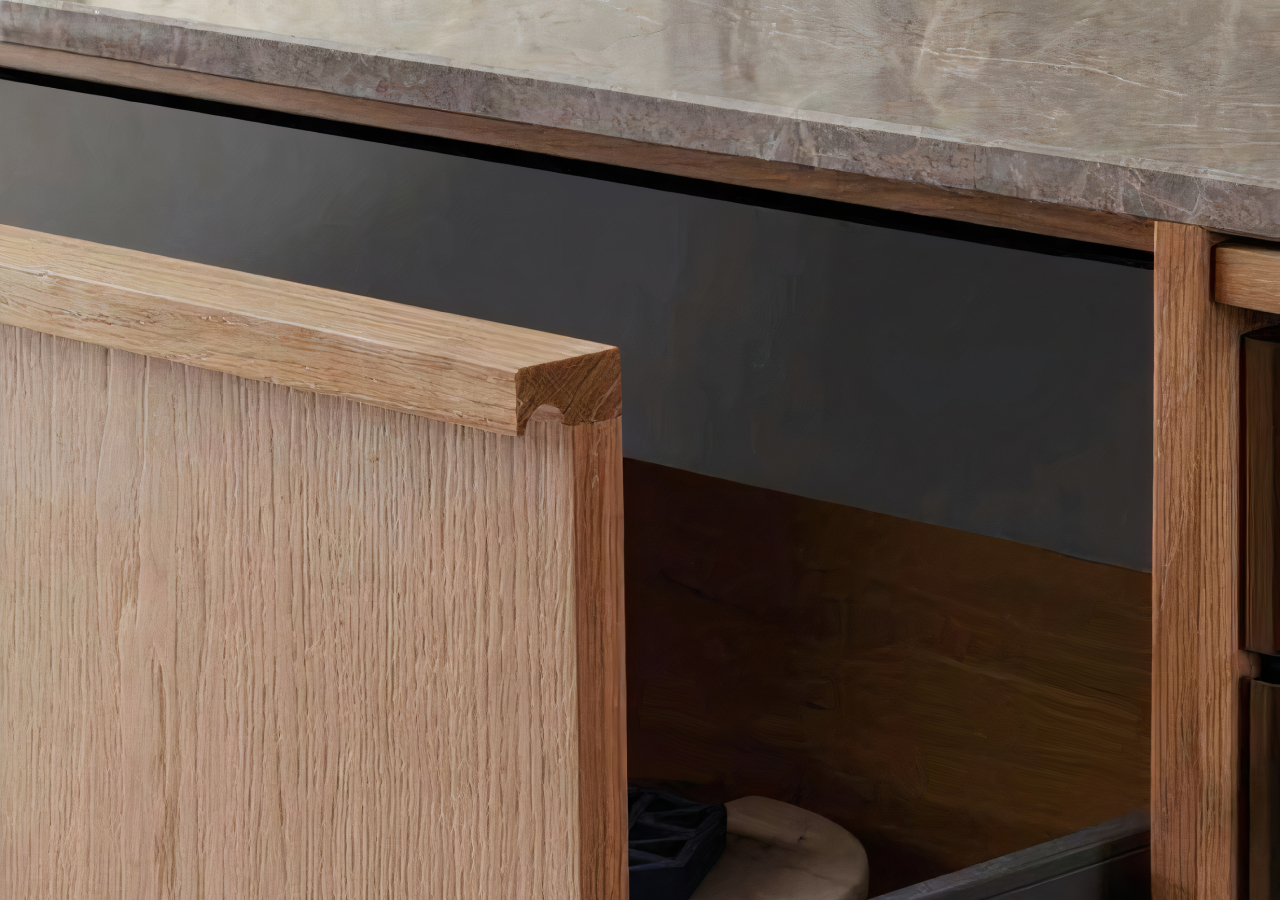
The Scandinavian style tends toward simplicity. To achieve this effect, appropriate fittings are taken into account. Slim, understated handles or minimalist finger pulls give cabinets a smooth and neat appearance. They help maintain the continuous line of the cabinets and contribute to a clean, architectural look. The cabinets are almost handleless, which makes them a more practical choice.
6. Focus on Clean Lines
.webp)
This is where structure meets visual appeal. Clear vertical and horizontal lines help to create visual rhythm within the Scandinavian kitchen. Think exposed shelf brackets aligned with the edges of cabinets, integrated LED strips, and islands that echo the geometry of the rest of the kitchen. It's all about calm, precise repetition that creates a sense of harmony.
7. Create Contrast
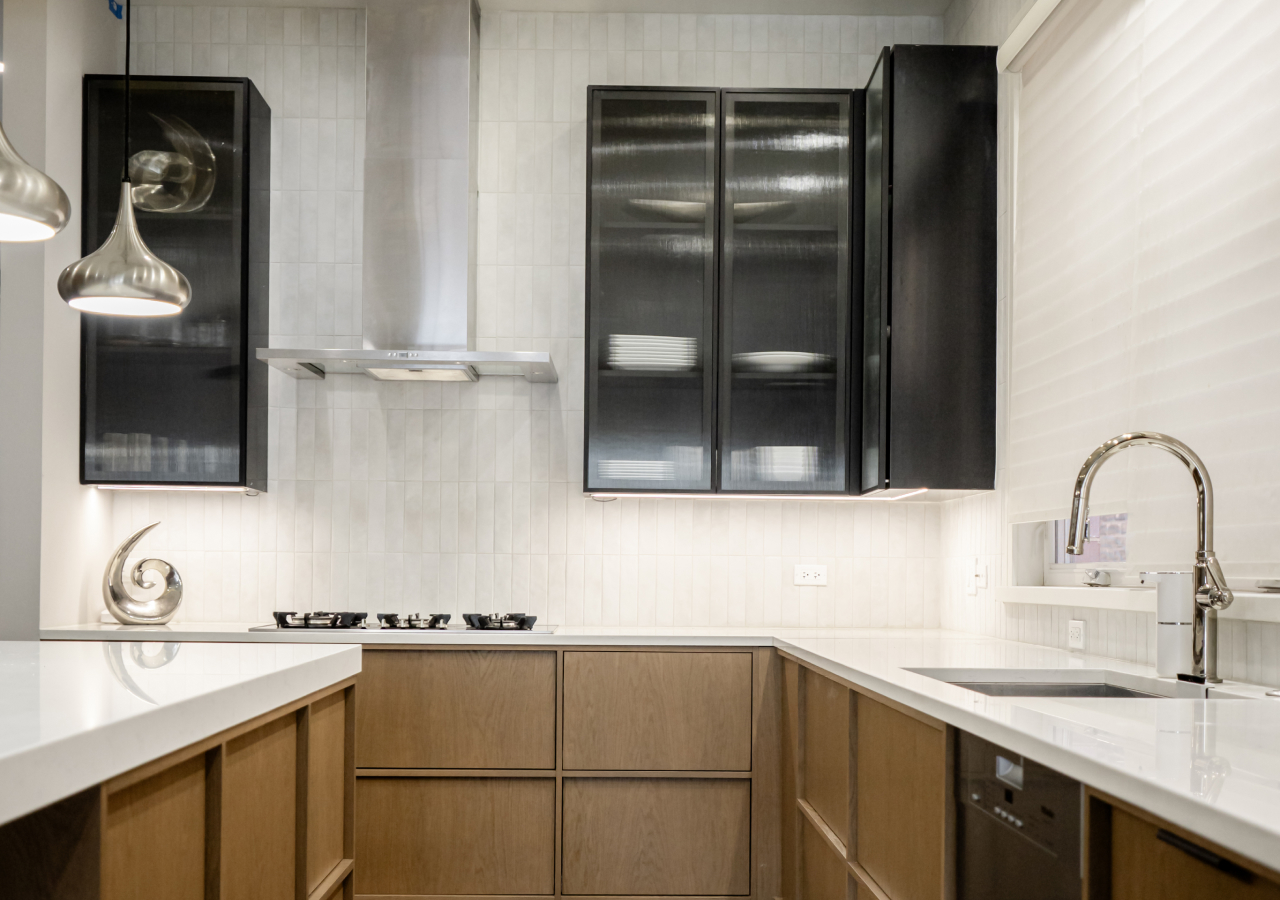
Contrast adds depth to Scandinavian interiors. For a kitchen in this style, the contrast should be clear yet subtle. Combine light wooden cabinets with darker countertops to offset the light color scheme. Alternatively, install upper cabinets with dark fronts to balance the light base cabinets. These options will add visual structure while maintaining the overall minimalist character.
8. Add Sculptural Accents
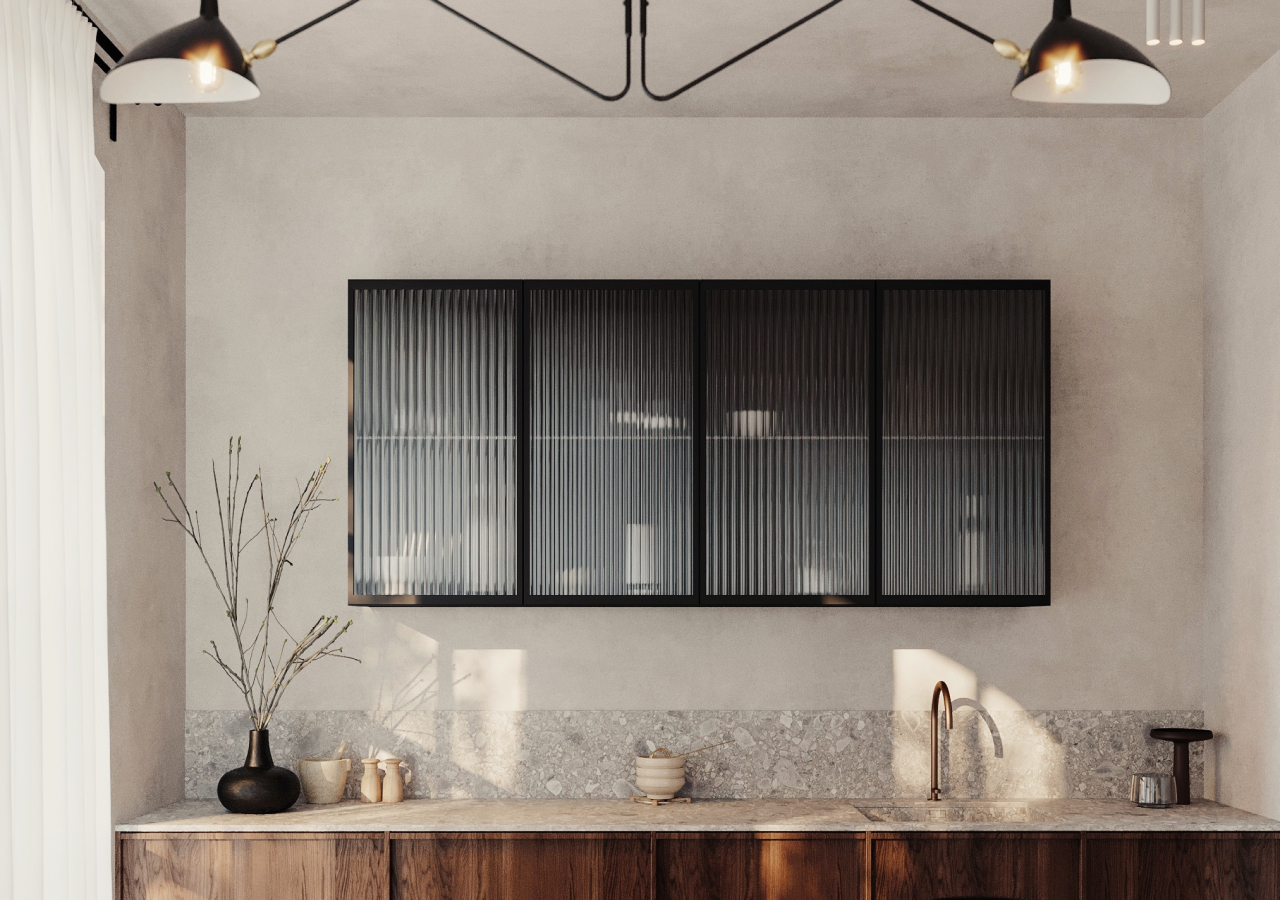
Ribbed wood panels, curved shelves, and ribbed glass can soften and add sculptural qualities to a Scandinavian-style kitchen. These elements create subtle shadows and movement, making the space more dynamic. Fluted panels on kitchen island fronts or vertical ribbed drawer fronts are popular choices for adding visual texture without overloading the design.
9. Use Functional Lighting
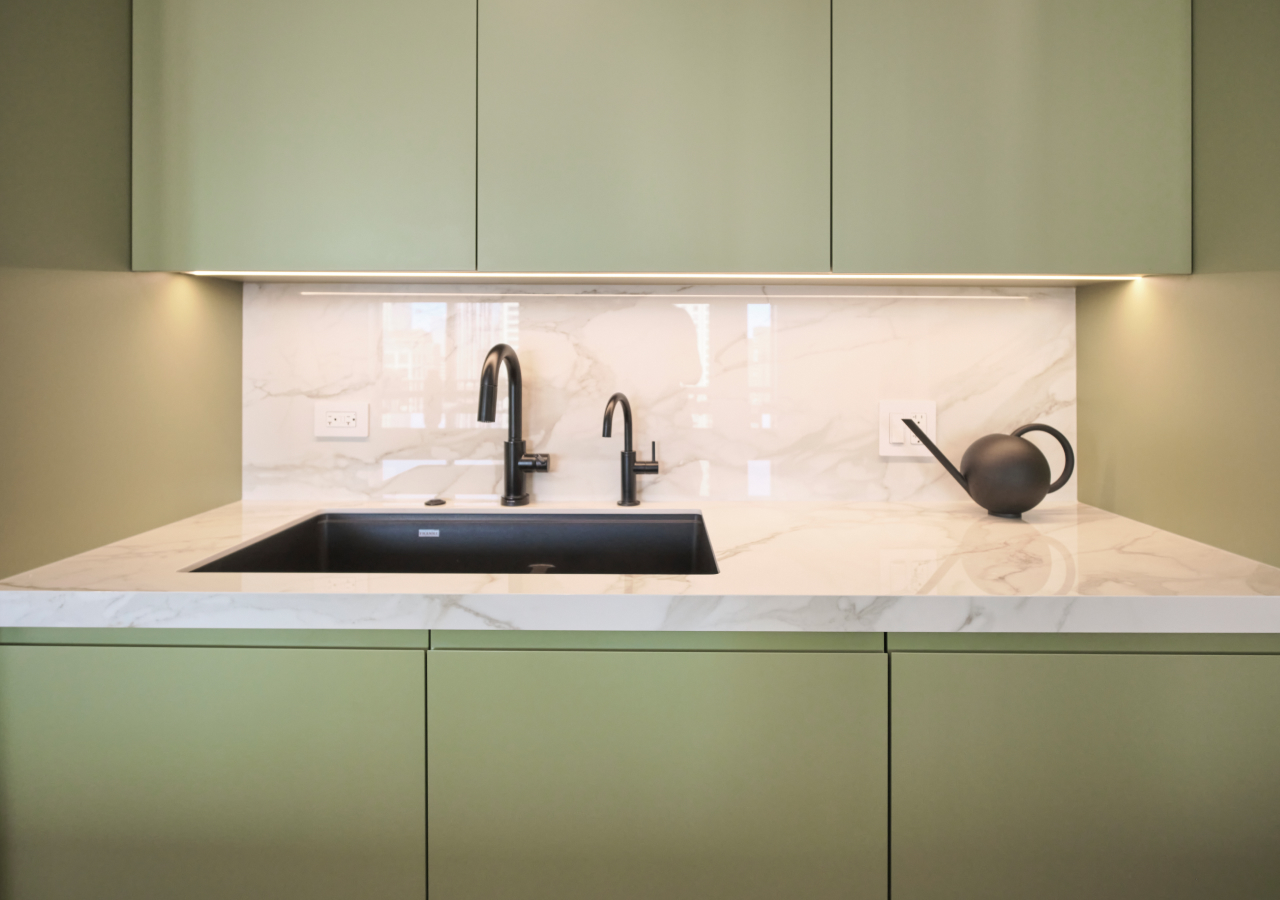
The lighting in Scandinavian kitchens is both atmospheric and practical. LED strips under shelves and subtle ceiling lights illuminate work areas while maintaining good visibility. Use warm, diffused lighting to maintain a soft, cozy setting. Place lights where they will be most useful: above cooking areas, inside drawers, and under wall cabinets.
10. Incorporate Open Shelves
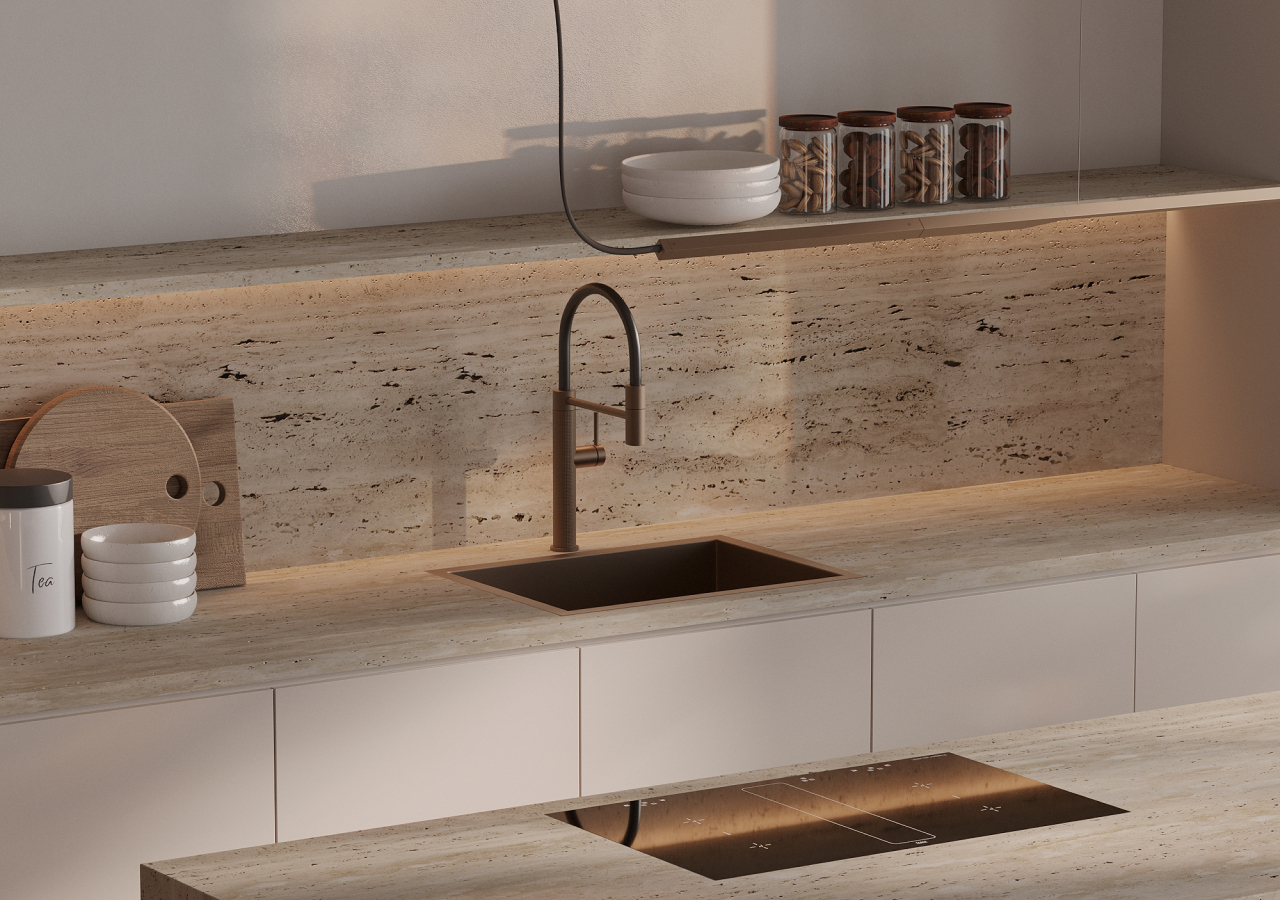
Open shelves give the kitchen a relaxed feel. They also highlight the Scandinavian style's commitment to functionality worthy of display. Use them for everyday tableware or your favorite ceramics. The key is to carefully select items and avoid cluttering the space. Open shelves add practicality and visual appeal when combined with a neutral color scheme and sturdy furniture. They also make the space feel more open.
11. Get Inspired by Nature
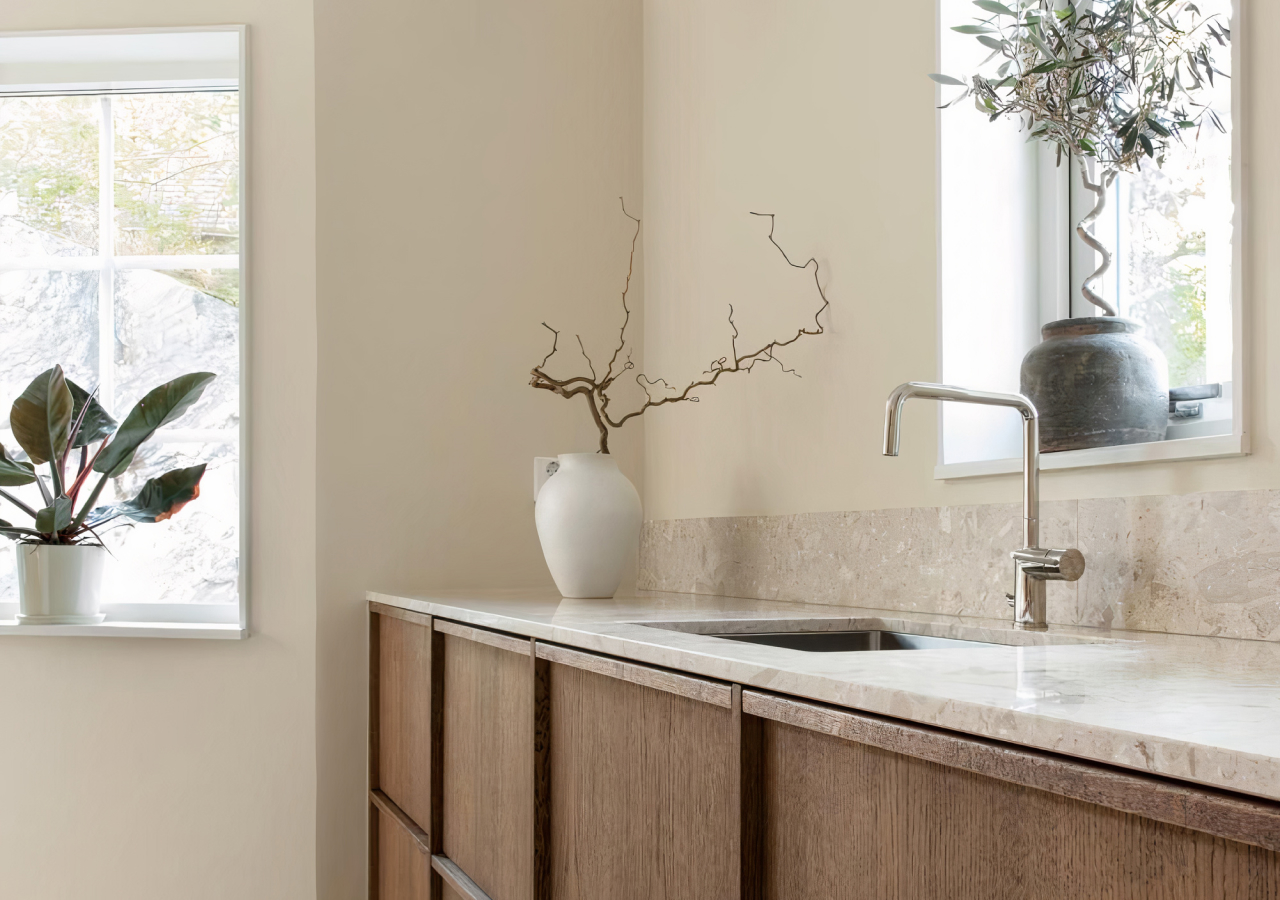
Scandinavian kitchens borrow many elements from nature. This is what you need to bring a sense of freshness and calm to the space. Create this atmosphere with raw surfaces, green accents, or natural lighting. If possible, enlarge the windows and use wood, stone, or live plants to create a natural feel in the room.
12. Lean into Japandi Style
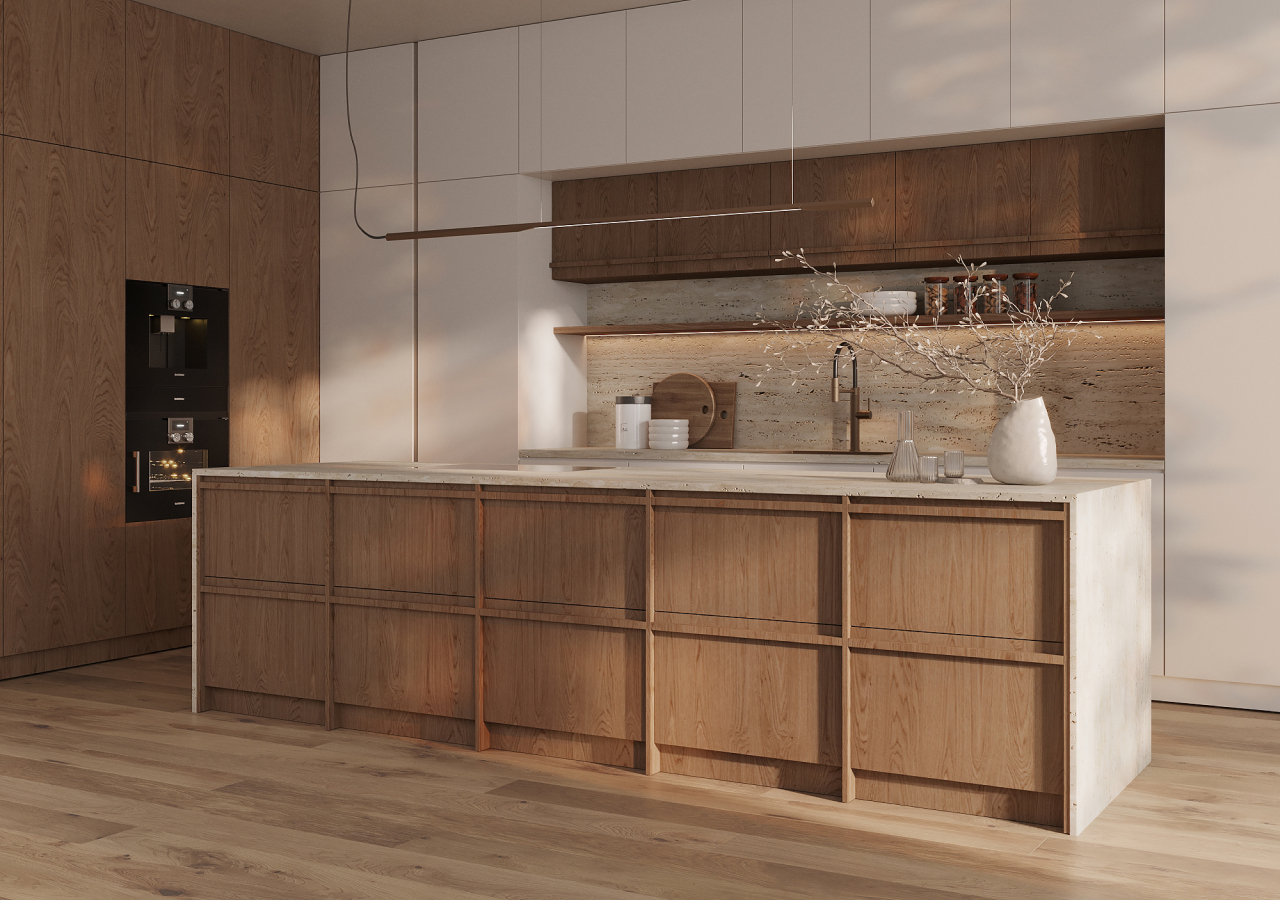
Japandi is a design style that combines the best of Scandinavian simplicity and Japanese precision and tranquility. It favors natural materials, handcrafted finishes, and muted color palettes. Japandi kitchens often borrow elements from Scandinavian design, such as neutral color schemes, handleless wooden cabinets, and thoughtful storage solutions. However, the addition of Japanese aesthetics creates calm, natural, and deeply thoughtful spaces.
13. Invest in Quality Appliances
.webp)
Built-in appliances are an integral part of Scandinavian kitchen design. They represent the most modern form of practicality. These appliances ensure the visual integrity of the interior while performing everyday functions. Consider refrigerators with panels, built-in hoods, and compact dishwashers. High-quality appliances work better and preserve the integrity of the design.
14. Add a Breakfast or Coffee Station
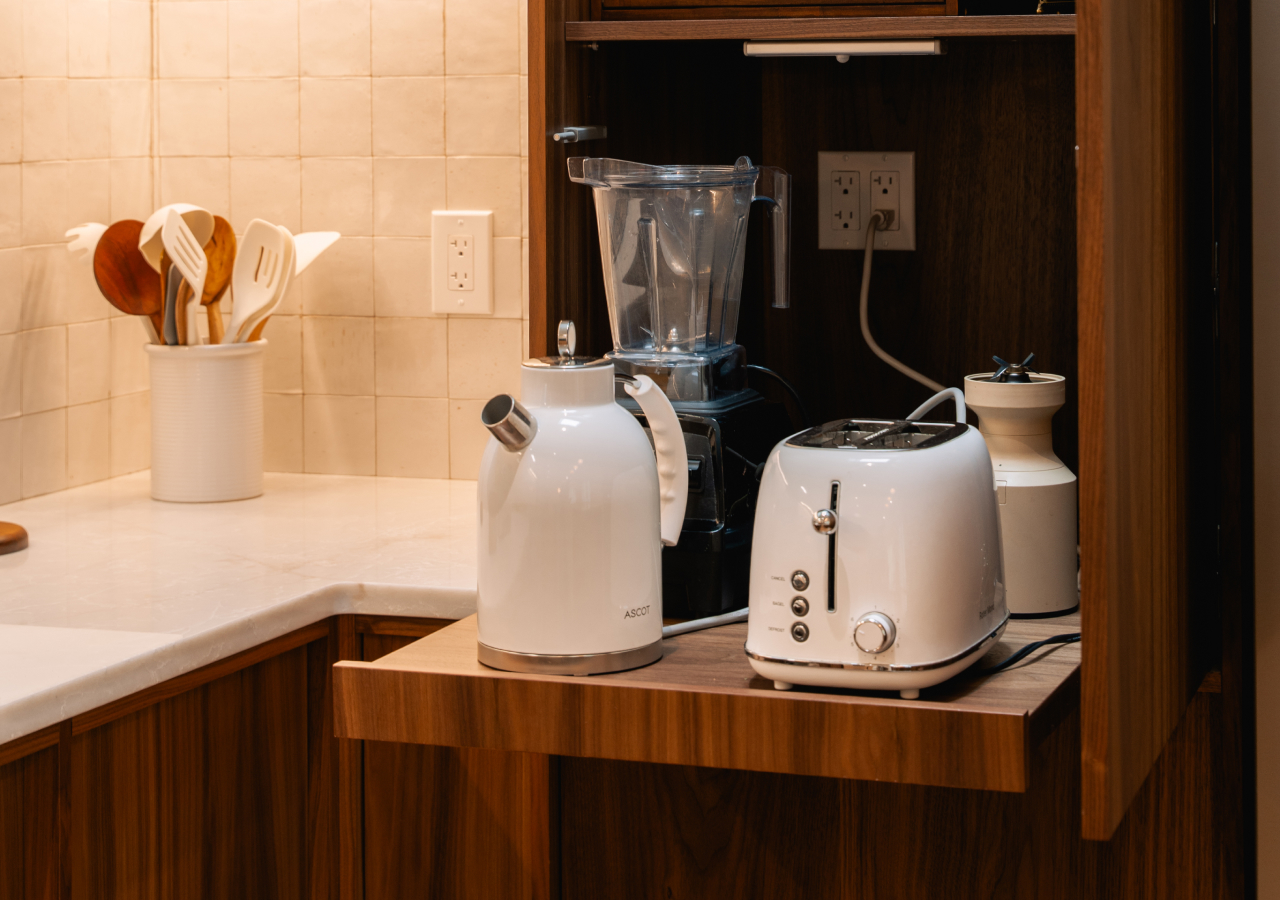
Built-in breakfast or coffee areas are a smart use of niche space in Scandinavian kitchen cabinets or pantries. These mini-areas help organize daily tasks while minimizing clutter on the main countertop. Use roller doors or pull-out shelves for breakfast or coffee stations so that they are out of sight but still have a place inside the cabinet.
15. Use Multi-functional Furniture
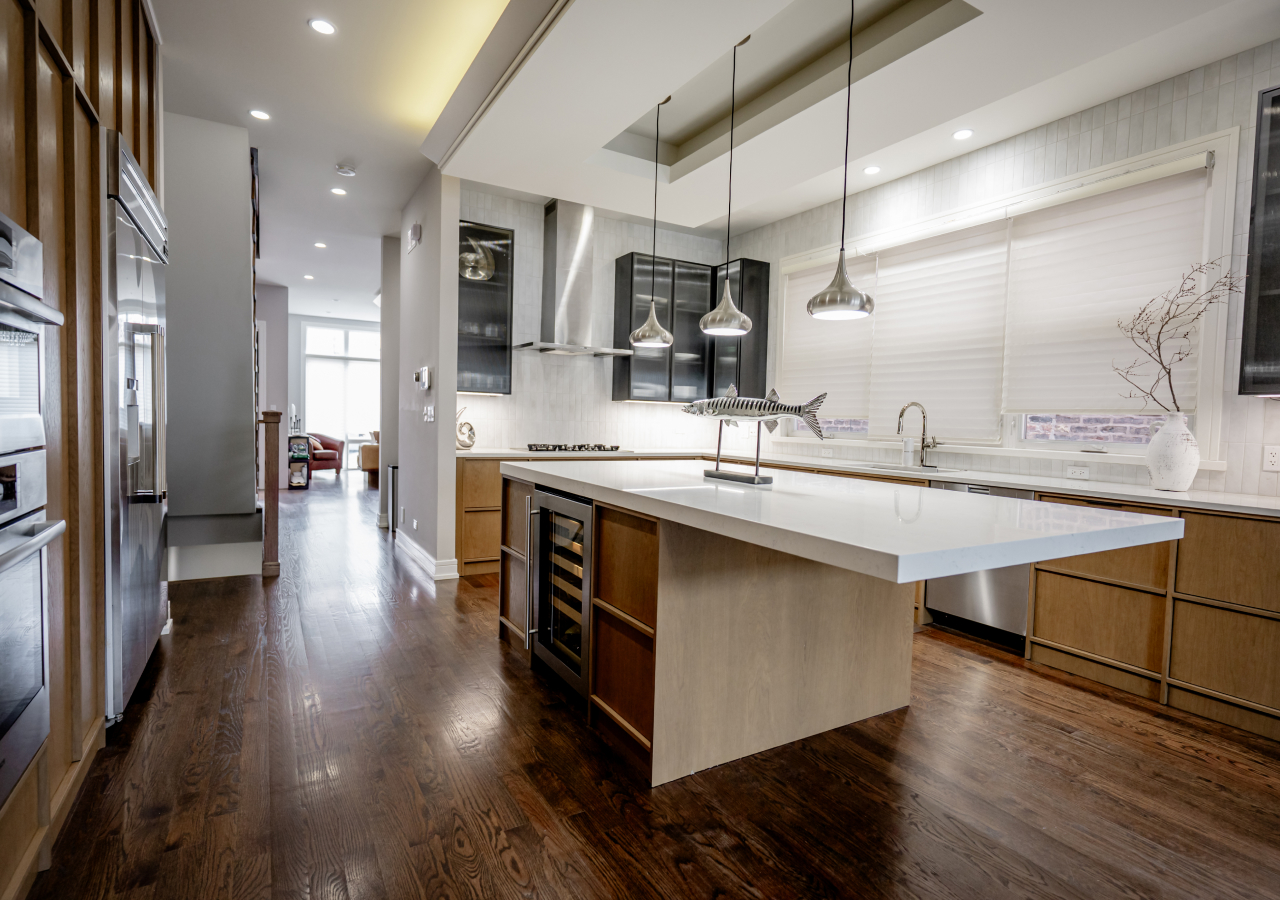
Scandinavian kitchens often double as dining and social spaces. Consider using extendable tables or islands with extended dining areas or bar counters. These features allow you to adapt to changing needs without cluttering the space. Guests will feel at home in a calm, cozy atmosphere.
16. Cut Out the Clutter
.webp)
This element of Scandinavian design is non-negotiable. The absence of clutter on surfaces is what makes Scandinavian kitchens so light and comfortable. Opt for internal drawer systems and separate areas for appliances, such as an appliance garage or individual organizers. A pantry with a variety of storage solutions will add to this effect.
17. Use Subtle Patterns
.webp)
Subtle yet eye-catching patterns on items or materials can serve as accents in Scandinavian kitchen designs. They can add dynamism and depth to a space without overwhelming it. Examples include tiles with a grid pattern, terrazzo countertops, and textured fabrics. These patterns breathe life into a space while maintaining a minimalist look.
18. Make the Design Feel Warm
.webp)
Warmth is not created solely through color. It can also be achieved through lighting, texture, and elements that evoke a sense of comfort. Wood is the primary material for this. A rich wood shade can fill a design with warmth. Linen curtains and other handmade items make the kitchen cozy and welcoming.
19. Keep It Simple
.webp)
Every choice in a Scandinavian kitchen must be deliberate. Each ingredient must serve a clear purpose. Therefore, it is better to choose fewer, higher-quality items. Even the choice of décor requires careful consideration. Clean surfaces, balanced symmetry, and a functional layout form the foundation of Scandinavian style.
20. Embrace the Hygge Philosophy
.webp)
Hygge is the Danish concept of comfort and contentment. A Scandinavian kitchen designed with hygge in mind will feel calm, cozy, and intimate. It is a space that reflects your mood and personality. Use tactile finishes, warm lighting, and thoughtful zoning to create spaces for socializing and quiet moments.
Scandinavian kitchens are more than just a style trend. They are a design philosophy based on simplicity and functionality. By focusing on simplicity, warmth, and functionality, you can design your own unique Scandinavian kitchen that looks beautiful and makes everyday life easier and more enjoyable. Set your goals, and Scandinavian kitchen design will help you achieve them.
FAQ
What is a Scandinavian kitchen style?
A Scandinavian kitchen style blends minimalism with warmth. It features clean lines, natural materials, and a soft, neutral palette that emphasizes functionality and visual clarity.
What are the rules for Scandi style?
Prioritize simplicity, functionality, and intentionality. Avoid clutter, embrace natural light, and choose quality materials that reflect calm and comfort.
What are the colors for Scandi kitchens?
Typical Scandi kitchen colors include warm whites, soft greys, light wood tones, muted greens, and natural hues. These palettes support a calm and airy atmosphere.
What is the difference between Scandinavian and Nordic design?
Scandinavian design often leans slightly more toward cozy minimalism with warm tones and textures, while Nordic design can be broader, occasionally more rustic or regionally specific. In kitchens, the terms are often used interchangeably.
How do I get the Scandi look?
Start with a neutral color base, choose handleless or minimalist cabinets, and invest in clean-lined, functional pieces. Add natural wood accents, good lighting, and keep surfaces clear to emphasize openness and calm.

